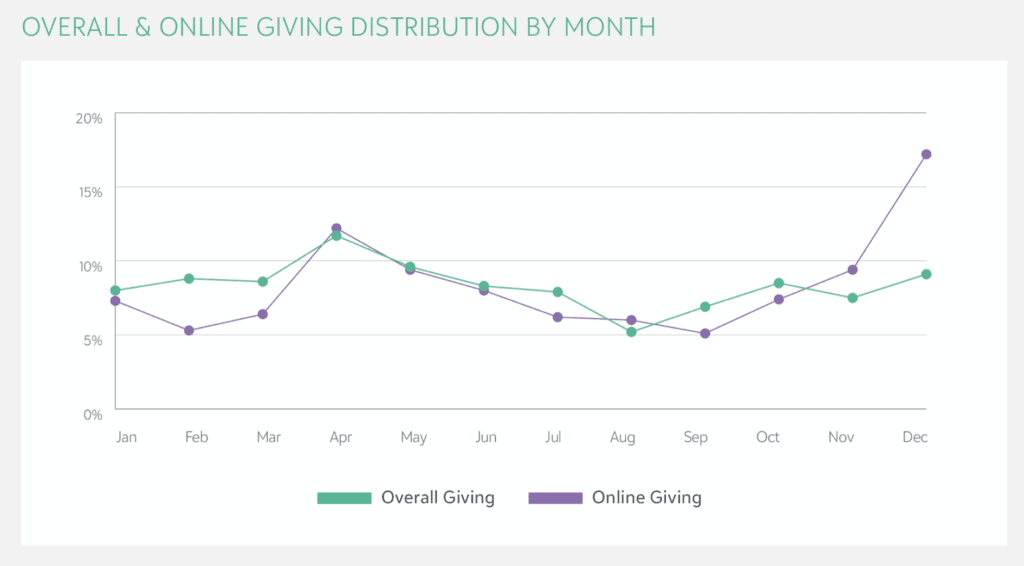So, what did happen to giving in 2020?
I've been lucky enough to have been given early access to some of the key findings from Blackbaud's 2020 Charitable Giving Report.
There's loads of great insight gained from the analysis of over $40 billion in charitable giving to over 8,800 organisations. But before you click here to read the full report, I thought it might be worth highlighting one or two few key findings.
So to kick off, there is good news for charities in the USA as they report that overall giving went up in 2020. After falling back by 8.3% in the second quarter (compared to 2019) it bounced back by the year end to deliver an overall growth of 2%. But not all charities benefited from that additional income. Most of it went to larger organisations...
- Large organisations with income of over $10 million saw their fundraising increase by 5.3%.
- Medium-sized organisations with income between £1 and $10 million increased by 1.2%.
- Small organisations with total annual fundraising of less than $1 million, experienced a 7.2% decrease in fundraising results compared by 2019.
Blackbaud also give some extra details of what happened in the UK and the picture here is not so rosy. They tracked giving to 300 organisations worth £310 million and saw that giving fell by 5.9% over the year. It also fell in Canada (4.8%) as well as Australia and New Zealand (4.2%).
I'd suggest, from our research findings and from the results of several record-breaking appeals, that the decline in income is not the result of a decline in people's desire or ability to give. Rather, it reflects a fall in the available opportunities to give during the pandemic. Though individual giving appeals have done very well, events and community fundraising activities have been impossible to maintain.
The other point that I wanted to highlight was what happened in the online world. The USA saw online income grow by 21% compared to 2019. As you'll see from the chart below, offline giving still dominates with 87% received through traditional routes, but look at the jump in the blue line. As we've seen before, donor behaviour is tracking consumer behaviour and this represents a huge increase.

Online giving saw a boost in the UK as well, as we saw the percentage of online giving jump in value by almost a third to reach 4.3% of total fundraised income. The chart below shows how giving was distributed across the year. It's easy to see the April peak in giving when we were in the midst of our first lockdown. And online giving shot up during December when we were living with the four-tier system that kept many of us at home. But all things considered, the numbers released by Blackbaud show just how much more reliant we are on traditional giving channels in the UK.

And of course as we've pointed out before, we must not confuse the medium of engagement with the medium of transaction. Much of the online growth in giving has come from an increase in the number of people giving online in response to postal appeals and press advertising rather than sending back a form in the post (according to our tracking of our appeals at Bluefrog).
That means, if you are mailing donors, using door drops and inserts or running press ads consider coupons and response envelopes as essential. Otherwise you'll be losing out on some of the 87% that is given offline in the USA or the 95% that is given offline in the UK. So please, don't drop coupons from your press ads no matter what your agency might advise.
But that said, the numbers shared by Blackbaud show things are definitely starting to change – people are moving their giving online. Even if it is a small percentage at the moment (particularly here in the UK), it is growing. That means landing and thank you pages must be both hard working and as relevant to the appeals that we send out as the response forms and thank you letters are to the packs that we mail.
You can find Blackbaud's full report here. The trends for the UK, Canada and Australia and New Zealand can be found here.
And here's an insightful – and entertaining – video from Jonathan Cook from Insight-ful who offers a slightly different angle on online giving.
Tags In
Related Posts
4 Comments
Comments are closed.
The Essentials

Crack the Code to Regular Giving: Insights, Strategies, and a Special Giveaway!

‘Tis Halloween. Keep to the light and beware the Four Fundraisers of the Apocalypse!

Why do people give? The Donor Participation Project with Louis Diez.

A guide to fundraising on the back of a postcard

What does the latest research tell us about the state of fundraising?







[…] post So, what did happen to giving in 2020? appeared first on […]
[…] […] So, what did happen to giving in 2020? […] by A once in a lifetime Christmas Appeal (we hope) – File4Me.com […]
[…] […] […] So, what did happen to giving in 2020? […] by A … by So, what did happen to giving in 2020? – FileJunction.com […]
[…] post So, what did happen to giving in 2020? appeared first on […]